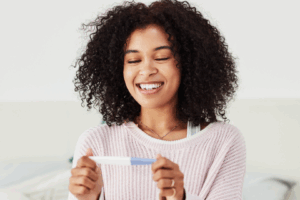Although most breast lumps are benign, an estimated one in eight women in the United States will develop breast cancer in her lifetime. But for as often as women have heard about self-exams and lumps in their breasts, many still ignore or put off medical attention that could ultimately save their lives.
 “Many women point to misconceptions that the abnormalities they are feeling in their breast are actually normal and therefore don’t require medical attention,” says board-certified breast surgeon John Pellegrino, MD, FACS, director of the Comprehensive Breast Cancer Program at CentraState. “For others, it’s a fear of the screening process that keeps people away.” Getting past some of these misconceptions and taking action when needed can make all the difference in when breast cancer is found and how it is treated, Pellegrino said. Which of these common untruths have you told yourself?
“Many women point to misconceptions that the abnormalities they are feeling in their breast are actually normal and therefore don’t require medical attention,” says board-certified breast surgeon John Pellegrino, MD, FACS, director of the Comprehensive Breast Cancer Program at CentraState. “For others, it’s a fear of the screening process that keeps people away.” Getting past some of these misconceptions and taking action when needed can make all the difference in when breast cancer is found and how it is treated, Pellegrino said. Which of these common untruths have you told yourself?
Lie #1: If there is no family history of breast cancer, there’s no need to worry about breast lumps.
Truth: Breast cancer does not discriminate. Whether there is a history of this type of cancer in the family or not, any abnormality in the breast needs to be examined. Those who do have a family history should be extra vigilant.
Lie #2: Lumps in women under a certain age are nothing to be concerned about.
Truth: While the risk of breast cancer increases with age, women can develop lumps or cancerous cells in their breasts at any age.
Lie #3: I don’t need to rush to my doctor when I feel a lump. My annual will pick up any problems.
Truth: Breast cancer doesn’t wait for your yearly well-woman visit. If you feel anything on self-exam that hasn’t been there before, make an appointment with your primary care physician or OB/GYN.
Lie #4: No lumps, no worries.
Truth: While a lump in the breast often signals the initial concern, breast cancer can present on a mammogram long before its physical presence is felt. Regular screenings after the age of 40 (or before 40 with existing concerns or strong family history) can be used to reveal small lumps or calcifications that cannot be felt in their early stages. If needed, a subsequent ultrasound can be used to determine if spots on the mammogram are water-filled cysts or solid growth of tissue.
Lie #5: Breast cancer can’t be cured, so why bother?
Truth: In years past, the chance of surviving breast cancer was slim. Today, though, with improved technology, diagnostics, techniques and procedures, as well as less radical chemotherapy and immunotherapy options, survival rates have improved dramatically. And the earlier the detection, the better the chances of beating the disease.
Lie #6: The radiation from a mammogram is dangerous.
Truth: Although today’s mammography machines still use x-ray imaging, improved technology results in lower radiation emissions and therefore a decrease in dangerous exposure.
Lie #7: Mammograms are painful.
Truth: Given how mammography machines press down on the breasts, patients often experience some temporary pain and discomfort when going for a screening; however, today’s 3D mammograms require less compression and therefore cause less pain. Patients can also take a Tylenol or ibuprofen tablet an hour or two before screening as a preventive measure for pain.
The TRUTH of the matter is that there’s no excuse for skipping screenings. Period. An annual well-woman exam is the first place to start to get on the right cycle of screening. Depending on your age, family history and other risk factors, your primary care physician or OB/GYN can give you tips on how to do regular monthly self-exams and refer you for a mammography screening when applicable.
To learn more about breast cancer screenings, visit CentraState’s website and schedule an appointment today.





